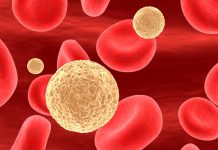Cerebral Edema or Brain Swelling is an enlargement of the brain due to damage to brain tissue. This damage can be caused by head trauma, stroke, tumor, or infection.
Cerebral edema can block oxygen-rich blood from entering the brain, as well as blocking blood flow out of the skull. Can cerebral edema kill you? Yes, In some conditions that are classified as severe and do not get treatment, cerebral edema can cause permanent brain damage, even death.
Causes of Cerebral Edema
Unlike brain disorder such as Frontotemporal Dementia (FTD) or Alzheimer, brain swelling occurs due to tissue damage, accumulation of fluid or blood, as well as swelling of blood vessels in the brain. Some conditions that can cause this disorder are:
- Brain injury from impact
- Infections, such as meningitis, encephalitis, or toxoplasmosis
- Brain tumor
- Stroke, both ischemic and hemorrhagic stroke
- Rupture of a brain aneurysm
- Low sodium levels (acute hyponatremia)
- Air pressure at a certain altitude, which is associated with acute mountain sickness (altitude sickness)
Symptoms of Cerebral Edema
Cerebral Edema can cause different symptoms in each patient, depending on the cause and severity. Symptoms that appear include:
- Headache
- Pain and stiffness in the neck
- Dizzy
- Nauseous
- Vomiting
- Movement disorders
- Numb
In advanced stages, cerebral edema can cause other symptoms, such as:
- Fever with a temperature >38.3°C
- Decreased level of consciousness or fainting
- Sudden changes in mood and behavior, such as confusion, delirium, lethargy, hallucinations, delusions, or aggression (behaving violently)
- Unable to speak clearly
- Paralyzed or unable to move a limb
- Intestinal obstruction
- Urinary incontinence
- Terrible headache
- seizures
Diagnosis of Cerebral Edema
The doctor will carry out a neurological examination and physical examination, by examining the patient’s brain function and level of consciousness. In addition, the doctor will also run the following tests:
1. Blood test, to find out the cause of brain swelling
2. Scanning with a CT scan or MRI, to see the location and severity of brain swelling
3. Lumbar puncture (spinal tap), to determine if brain swelling is caused by meningitis, encephalitis, subarachnoid hemorrhage, or cancer
Cerebral Edema Treatment
In conditions that are relatively mild (such as altitude sickness), cerebral edema can recover by itself within a few days. However, most cases of cerebral edema can be life-threatening and require further treatment.
Treatment for cerebral edema aims to address the cause and ensure that the brain receives an adequate supply of oxygen and blood during recovery. That way, further damage due to brain swelling can be prevented.
- Administering a special type of infusion to reduce cerebral edema and lower pressure in the brain.
- Administration of drugs, to reduce cerebral edema and prevent blood clots. Types of drugs used include mannitol, dexamethasone, diuretics, and corticosteroids.
- Installation of breathing apparatus, to help patients breathe. This action is also to ensure that the patient is not lack of oxygen.
- Ventriculostomy, to remove excess fluid from the brain. This procedure is performed by inserting a tube through a small incision in the head.
- Surgery, to overcome the causes of cerebral edema. If the swelling of the brain is caused by a tumor, the doctor will perform surgical removal of the tumor.
Complications of Cerebral Edema
If not treated immediately, severe cerebral edema can lead to brain herniation which can be fatal. In addition, sufferers can also experience the following complications:
- Permanent brain damage
- Blindness
- Brain atrophy (shrinkage of brain tissue)
- Hydrocephalus
- Impaired cognitive function
- Mental disorders
- Sleep disorders
- Epilepsy
- Paralysis
- Coma
In rare cases, cerebral edema can put pressure on the pituitary gland, causing Empty Sella Syndrome.
Prevention of Cerebral Edema
Prevention of cerebral edema is adjusted to the risk factors, for example by preventing collisions that can cause head injuries, or avoiding stroke risk factors. The following efforts can also be made to prevent cerebral edema:
- Avoid smoking habits
- Live a healthy lifestyle and get enough rest
- Wear a helmet or seat belt when driving
- Wear safety equipment or personal protective equipment, when carrying out activities
- that have a risk of causing a collision
- Undergo regular blood pressure and heart checks
If you like traveling to high altitudes, such as climbing mountains, stop at a certain altitude so that your body can first adapt to the pressure at that altitude.
References:
- Cook, A., et al. (2020). Guidelines for the Acute Treatment of Cerebral Edema in Neurocritical Care Patients.
- Jha, R., et al. (2019). Pathophysiology and Treatment of Cerebral Edema in Traumatic Brain Injury.
- Mayo Clinic (2020). Tests & Procedures. Lumbar Puncture (Spinal Tap).
- Anthony, K. Healthline (2018). Cerebral Edema.
- Natale, N. Everyday Health (2020). What is Cerebral Edema? Symptoms, Causes, Diagnosis, Treatment, and Prevention.
- Roybal, B. WebMD (2020). Brain Swelling.
Read our other informative articles, please follow us on:
![]()

































